During my banking career, I had the privilege to work with many talented and interesting people. One of those was a man who married a German woman whose grandmother was from Dresden, Germany. Steve told me that every two years, he and his wife would travel to Dresden to see her grandmother for a couple of weeks. On each trip, they could always count on being treated to the best seats in the theater, movie houses, and sports venues.
It turned out that Grandma was a Trümmerfrau or, a “Brick Lady” of Dresden.
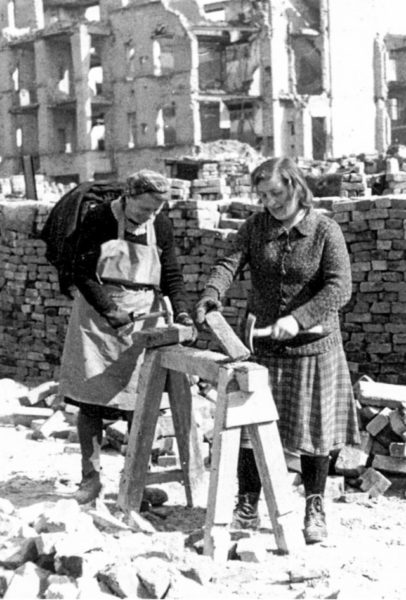
Did You Know?
Did you know that forty U.S. generals were killed during World War II or immediately thereafter? That represents 3.6 percent of almost 1,100 U.S. generals and compared to the generals that the Soviet Union and Germany lost, it was a very small percentage. The difference is that our generals were either killed by the enemy, died of heart attacks, or disappeared without ever being found. A majority of the Soviet and Nazi generals were killed by their leaders: Joseph Stalin and Adolph Hitler, respectively.
The United States never followed a policy whereby generals were executed for gross incompetence, insubordination, or any other reason ⏤ the worst punishments were loss of jobs and demotion in military rank. However, the two dictators directly controlled their senior military staff and there was no room for failure or other sins. Stalin purged (i.e., executed) at least 65,000 high ranking and experienced officers in the years before World War II. Those executed included fifteen generals of the army, ninety-three percent of all officers ranked lieutenant general and above, and fifty-eight percent of all colonels through major generals. By the time the Second World War began, Stalin found he was lacking the necessary experience to plan and wage war. Hitler was equally brutal to his officer corps. During the war, eighty-four Nazi generals were executed while another 135 generals were killed in action (I suppose Field Marshal Rommel met both criteria ⏤ symbolically as well as realistically).
The City of Dresden
The city of Dresden can trace its lineage back thousands of years when it was a settlement of Slavic people. By 1350, it became known as Antiqua Dresdin and shortly afterwards, “Old Dresden.” Towards the end of the 15th-century, the city was the seat of the dukes of Saxony and today, it is the capital of the German state of Saxony. The 17th-century saw the building of the Zwinger Royal Palace, the Japanese Palace, the Taschenbergpalais, the Pillnitz Castle, and two landmark churches: The Catholic Hofkirche and the Lutheran Frauenkirche.
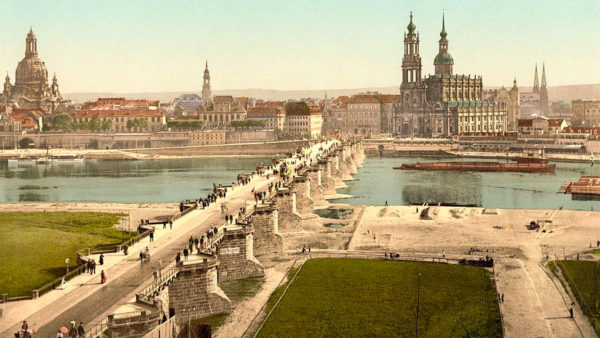
During World War II, Dresden was Germany’s seventh largest city and a major supplier of material to the Nazi military as well as being located on two strategic transportation corridors (the city was a major eastern route for German troops fighting the Soviet army as it advanced westward towards Berlin). Documents declassified in 1978 revealed Dresden was home to more than 110 factories supporting the Nazi war efforts including a poison gas factory, anti-aircraft manufacturing, optical products, electrical, gears and electric gauges. A munitions storage depot was also located in the city. Despite its military importance, Dresden escaped Allied bombing because of its location. That is, until late 1944 and early 1945.
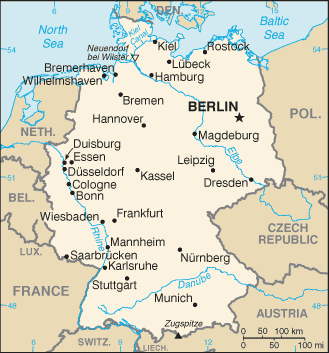
Dresden’s entire Jewish community was either deported or murdered by the Nazis between 1933 and 1945. One of the Nazis’ primary prisons was located in Dresden: the Münchner Platz. Approximately 1,300 people were executed here including labor leaders, members of the resistance, undesirables, and anyone caught listening to the BBC broadcasts. The final months of the war saw Dresden’s population grow to 1.2 million, primarily as a result of German refugees. Its pre-war population had been 350,000 (today, Dresden counts 550,000 citizens).
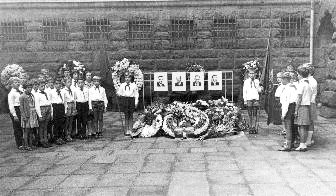
The city was bombed by the Allies seven times between 1944 and 1945 with the most devastating attack killing approximately 25,000 civilians on 14/15 February 1945. To this day, the bombing remains a controversial topic both between historians as well as the Germans including right-wing groups.
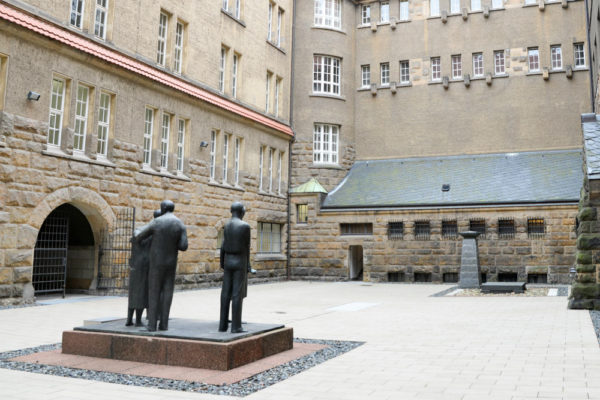
The Dresden Bombing or Ein Dicker Hund
The two primary Allied air forces were the United States Army Air Force (USAAF) and the British Royal Air Force (RAF). The RAF only flew during darkness (Churchill believed his crews were better protected under the cover of darkness) while the British left day-light bombing and attacks to the USAAF.
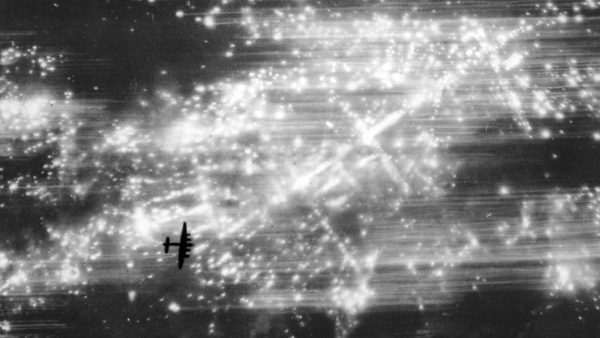
One month before the February 1945 bombing, the USAAF Eighth Air Force targeted the railyards near the center of Dresden. Three months earlier, bombers targeted German troop transportation corridors. Now it was time for the seventh aerial campaign over Dresden with the intent on crippling Nazi war material production.
The initial bombing runs over Dresden were scheduled for 13 February, but bad weather grounded the Eighth Air Force bombers. So, the RAF acted as the first wave and sent its bombers out at 5:20 P.M. for the 700-mile journey from England over France and onto Germany. The plan was to have two waves of RAF bombers, separated by three hours, attack Dresden during the early hours of 14 February.
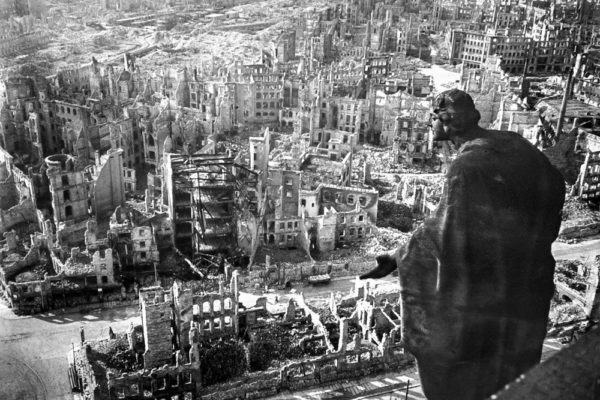
The first air raid sirens went off in Dresden at 9:51 P.M. Following the glow of red target indicators released from Mosquito marker planes, the Lancaster bombers dropped 881 tons of bombs; 57% high explosive and 43% incendiaries. The second attack began three hours later. From five hundred miles away, fires in the city could be seen with smoke rising 15,000 feet. The second wave dropped 1,800 tons of explosives, all within twenty minutes. But it wasn’t over.
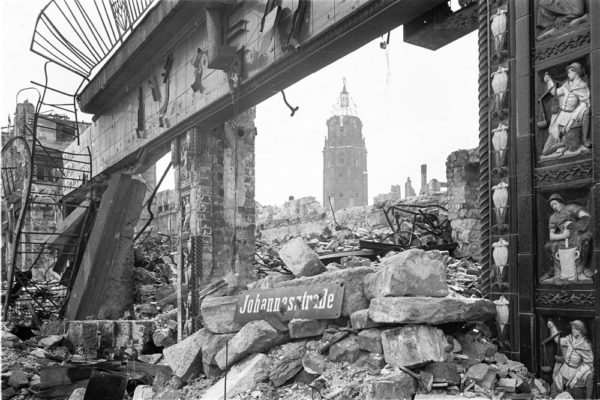
The Eighth Air Force ⏤ 1st Bombardment Division ⏤ sent its bomber groups out the morning of 15 February with the order to begin releasing their payloads at 12:17 P.M. over the railyards west of the city center. Almost 2,100 aircraft took off from England including 784 P-51s acting as escorts for the B-17s. The majority of the bomb groups found their primary target, Dresden, to be obscured by clouds when they arrived. So, the bombing targets were identified by using radar rather than by the more precise method of visual identification. Approximately 115 B-17s misidentified their target and bombed the cities of Prague, Brux, and Pilsen. One bomber group turned back to the secondary target, Dresden, after finding their primary target clouded over.
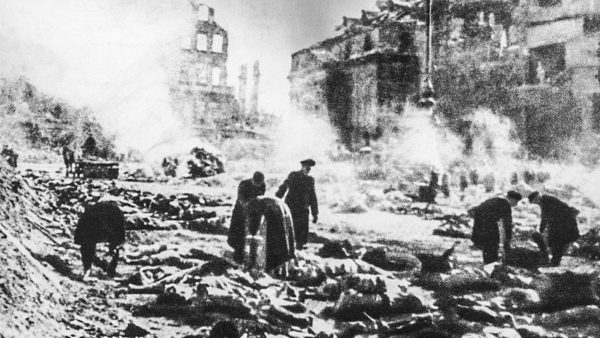
Dresden was a sitting duck. Its air defenses had been transferred east to fight the Soviet Army. The last heavy flak battery was removed from the city in January 1945. The Luftwaffe could not provide much support as it lacked planes, pilots, and fuel. After the first attack wave, electricity was lost and the only air raid sirens for the second wave of RAF and the ensuing USAAF attack the next morning came from hand-held devices. German radar by that time had become almost non-existent. Losses sustained by the Allies during the raids were minimal: the RAF lost six bombers (due to “friendly fire”) while the USAAF lost one B-17.
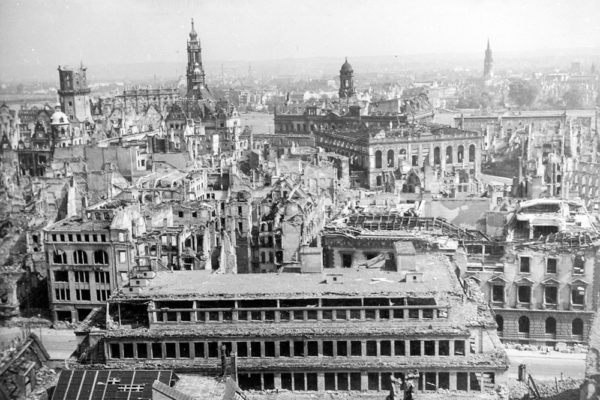
Eyewitness accounts told about the reactions to the first evening air raid sirens on 14 February. They saw the large aircraft formations approaching Dresden and said it was called ein dicker Hund or, a “fat dog – a major thing” that was about to happen. They had no idea how right they were.
The Fire Storms
While the bombing was intense, it was the enveloping fires which created the greatest damage and death. More than ninety percent of the city center was destroyed. Approximately 25,000 civilians lost their lives. The resultant fire storm was so intense that many people fainted from a lack of oxygen and then burned to death. Most people sheltered in their basements as there were very few public air raid or bomb shelters. But for many, those home shelters were destroyed, and they had to move from one house to another. Approximately 78,000 residential dwellings were destroyed with 28,000 rendered uninhabitable and 65,000 damaged but repairable.
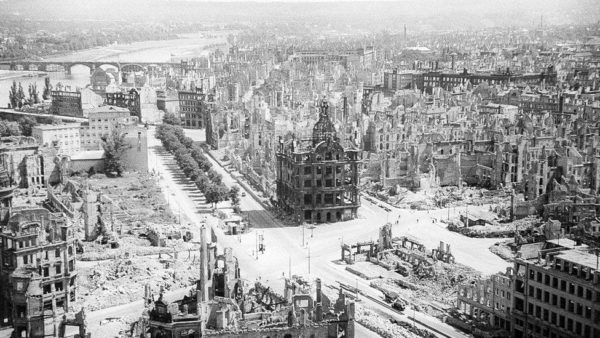
A Dresden police report recorded the fire had engulfed the old town and destroyed more than 12,000 buildings including every type of dwelling imaginable. From the strategic military standpoint, 23% of the industrial buildings were obliterated along with 200 factories damaged. After the bombing, the targeted transportation routes were quickly filled once again with troops moving east.
The Brick Ladies
Known as Trümmerfrau or, literally ruins woman or rubble woman, these were women who, in the aftermath of the bombing and World War II, cleared Germany’s bombed cities including Dresden and Berlin. In Dresden today, they are known as the “Brick Ladies.” Because there were so few men (by the end of the war, the number of German women exceeded men by seven million), the task of cleaning up the rubble fell on the shoulders of the women.
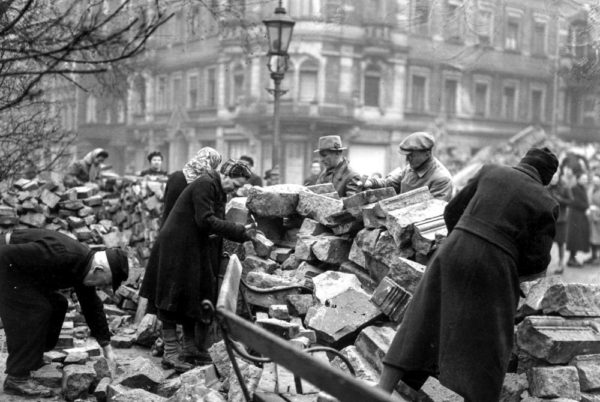
Of the sixty-two major German cities and sixteen million homes bombed by the Allies, 7.6 million residential homes were either destroyed or damaged leaving 7.5 million Germans homeless. Half of Germany’s school buildings were destroyed. Immediately after the war ended, the Allies (including the Soviet Union) ordered all women between 15 and 50 years of age to participate in the cleanup. All legal measures of protecting women in the labor force were eliminated. The primary tools used for the clean-up as well as tearing down unsafe buildings were picks, sledgehammers, buckets, and hand-winches. The women would form a chain and pass brick-by-brick to the street where they would chip away mortar, clean the brick, and then stack them to be used later during the rebuilding phase. Any material or debris that could not be reused was taken out by wheelbarrow and transferred to trucks which would haul it away to fill in bomb craters. In some cities, schuttberge or, debris mountains were created.
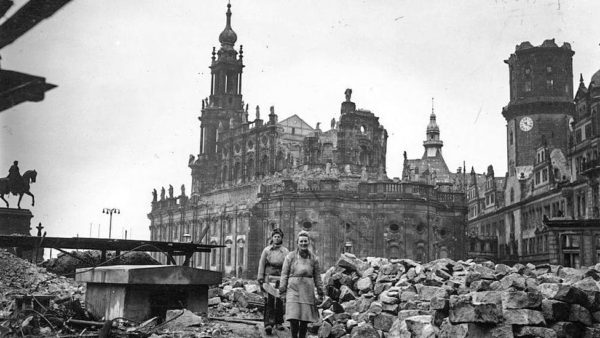

The Brick Ladies were organized into groups of twenty and they worked in all kinds of weather. Their average workday was nine hours with one 30-minute lunch break. They were paid 72 Reichspfennig per hour (probably around ten cents) plus a ration card for one (even though food was very scarce). At the end of her shift, a Brick Lady walked away with six and a half Reichsmarks and nine food ration cards. At the time, a loaf of bread was eighty Marks, one pound of butter was six hundred Marks, and one cigarette cost ten Marks. To supplement their income, items such as clothing found in the rubble was salvaged and sold.
Today, Germans look upon the Trümmerfrauen as heroes. My friend’s wife’s grandmother was a Brick Lady in Dresden. When they visited and wanted to attend a special event, they told Grandma who would then telephone the Dresden mayor. The next day, tickets to the best seats in the house were personally delivered to Grandma.
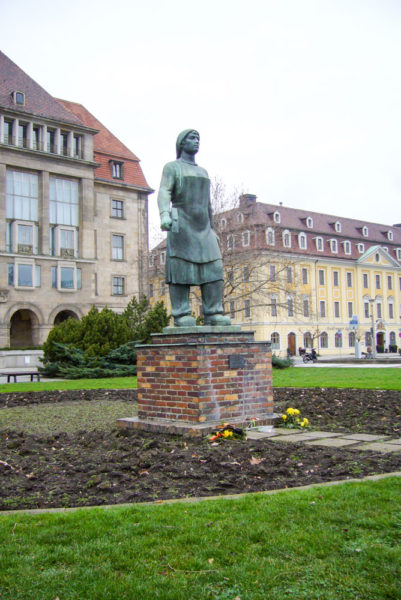
Controversy
The controversy over the Dresden bombings is very similar to the controversy surrounding the dropping of the second atomic bomb on Nagasaki: in other words, were the bombs necessary considering both enemies were likely beaten at the time? At the time, the military was convinced the Dresden bombings were necessary but even Churchill had his doubts afterwards. I’m not going to go down that road in this blog post but there are some very interesting points of view on either side.
The majority of the bombing and concentrated damage took place in the center of the city and not in the suburbs where the majority of manufacturing facilities were located. Prior to the February bombings, Dresden citizens believed one reason their city would be spared from heavy Allied bombing was because Dresden was a popular vacation destination for the British prior to the war. Several days after the bombings, the media questioned the motivation behind the widespread destruction. A senior Allied military official answered that the primary goal was to disrupt the movement of German military supplies and troops. He added that they hoped to destroy “what was left of the German morale.” One week before the bombings, Churchill, Stalin, and Roosevelt met at Yalta where it was agreed to bomb the arteries providing the Wehrmacht the means to quickly move troops to the east to fight the Soviets. Shortly after the destruction of Dresden, the American press claimed it had been a “terror bombing.”
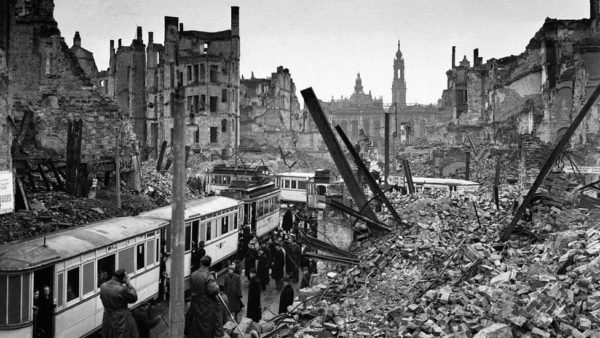
One of the historical controversies has been the strafing of civilians by the USAAF during and after the bombing on 15 February. Historians and military experts have discounted these stories as inaccurate. The overall conclusion is that strafing did not occur although some citizens may have thought it was strafing when bullets from aerial dogfights hit the ground and splintered. Declassified documents revealed the Allies gave specific orders to their pilots prohibiting strafing.
One aftermath of the Dresden bombings was that the Allies changed their bombing strategies from wholesale destruction to bombing targets of strategic importance. In less than three months, it wouldn’t matter any longer. The war ended and Dresden would endure the next forty-four years under Soviet domination in East Germany.
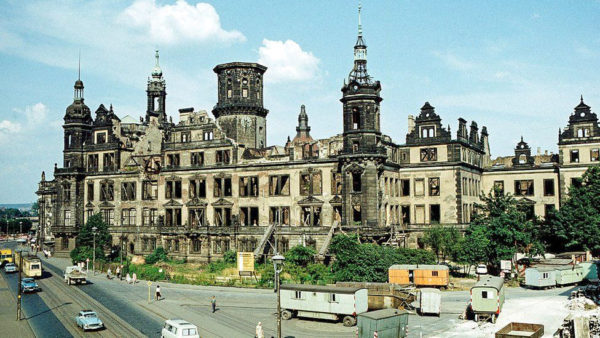
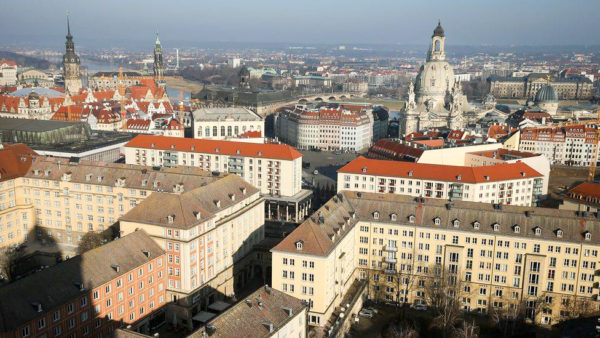
A contemporary aftermath is that each year on the anniversary of the bombings, Germany’s far-right wing groups (e.g., Alternative for Germany or, AfD), neo-Nazis, and historical revisionists use the Dresden martyrdom as an excuse to promote their agenda based on anti-Semitism, nationalism, and fascism.
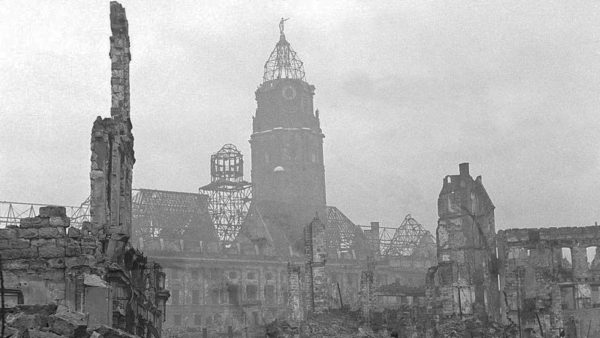
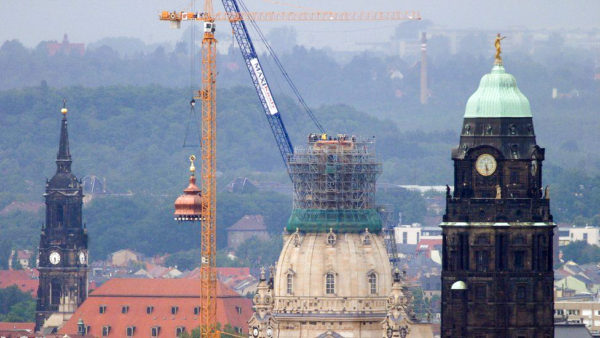
✭ ✭ ★ Learn More About The Brick Ladies and Dresden Bombing ✭ ★ ★
Charles River Editors. The Firebombing of Dresden: The History and Legacy of the Allies’ Most Controversial Attack on Germany. 2014.
Joel, Tony. The Dresden Bombing: Memory and the Politics of Commemorating Destruction. London: I.B. Tauris, 2014.
McKay, Sinclair. The Fire and the Darkness: The Bombing of Dresden, 1945. New York: St. Martin’s Press, 2020.
McKee, Alexander. Dresden 1945: The Devil’s Tinderbox. New York: Dutton Publishing, 1984.
Taylor, Frederick. Dresden: Tuesday, February 13, 1945. London: Bloomsbury Publishing, 2004.
Vonnegut, Kurt. Slaughterhouse-Five. New York: Dell Publishing, First paperback publishing, 1984.
What’s New With Sandy and Stew?
Does anyone remember the blog post about Marcel Marceau’s resistance exploits during the German occupation of France? (Click here to read Bip the Clown.) Well, it seems Hollywood has made a film about Marceau and his efforts to save Jewish children. Jesse Eisenberg plays Marcel Marceau in “Resistance,” an IFC film. I haven’t seen it yet but I’m looking forward to watching it. I normally do not enjoy watching Hollywood films on historical events ⏤ too many liberties are taken with the facts. I suppose it’s no different than the “historical” fiction novel. But then, I don’t read many historical novels either.
Thank you to all of you who subscribe to our bi-weekly blogs. It seems there isn’t a day that goes by where we don’t increase our readership. Please let your history buff friends and family members know about our blogs.
Someone Is Commenting On Our Blogs
I’d like to thank Jeanne C. for letting us know she enjoyed our blog, Children of the Damned (click here to read). She couldn’t believe how many of the Nazi leaders’ children continued to support Nazi philosophy. In researching my new book, Where Did They Put the Gestapo Headquarters, I have found many stories and situations which defy belief. This was especially true about how so many of those monsters were treated with leniency after the war.
If there is a topic you’d like to see a blog written about, please don’t hesitate to contact me. I love hearing from you so keep those comments coming.
Why Would You Want To Buy Our “Walks Through History” Books?
Simple.
You like to travel and experience history and historical events. You like to see original buildings that had a significant impact on the people and events of the history you’re engaged with. You want to know the stories behind the brick and mortar in front of you.
The walking tour books are meticulously researched so you can go directly to those sites and learn about the building’s history as well as an introduction to some of the more interesting people associated with it.
We Need Your Help
Please tell your friends about our blog site and encourage them to visit and subscribe. Sandy and I are trying to increase our audience and we need your help through your friends and social media followers.
Thank You
Sandy and I appreciate you visiting with us. We have some exciting things on the horizon and we’ll keep you updated as we go along.
Share This:
Follow Stew:
Find Stew’s books on Amazon and iBooks.
Please note that we do not and will not take compensation from individuals or companies mentioned or promoted in the blogs.
 Walks Through History
Walks Through History
Copyright ©2020 Stew Ross

I’m confused – you never explained why a “brick lady” would be able to get the best seats “in the house” so many years after WW11.
Thanks Katie for your question. Over time, the brick ladies took on a cult status in many German cities. So much so that statues were erected as memorials to their efforts. The city mayors have always held these women in high esteem and providing them special services was their way of repaying the women for the arduous work of cleaning up the destroyed cities immediately following the end of the war. Again, thanks for reaching out to us. Let us know if there is topic you think might make a good blog. STEW
Probably an initiative from the Government to thank these ladies for helping with the reconstruction. Due to their age they knew they had to have participated. It was mandatory.
Hi Nicole, always good to hear from you. Yes, I agree with you that it was an initiative and likely, a mandatory gesture by the mayors. Talk soon. STEW